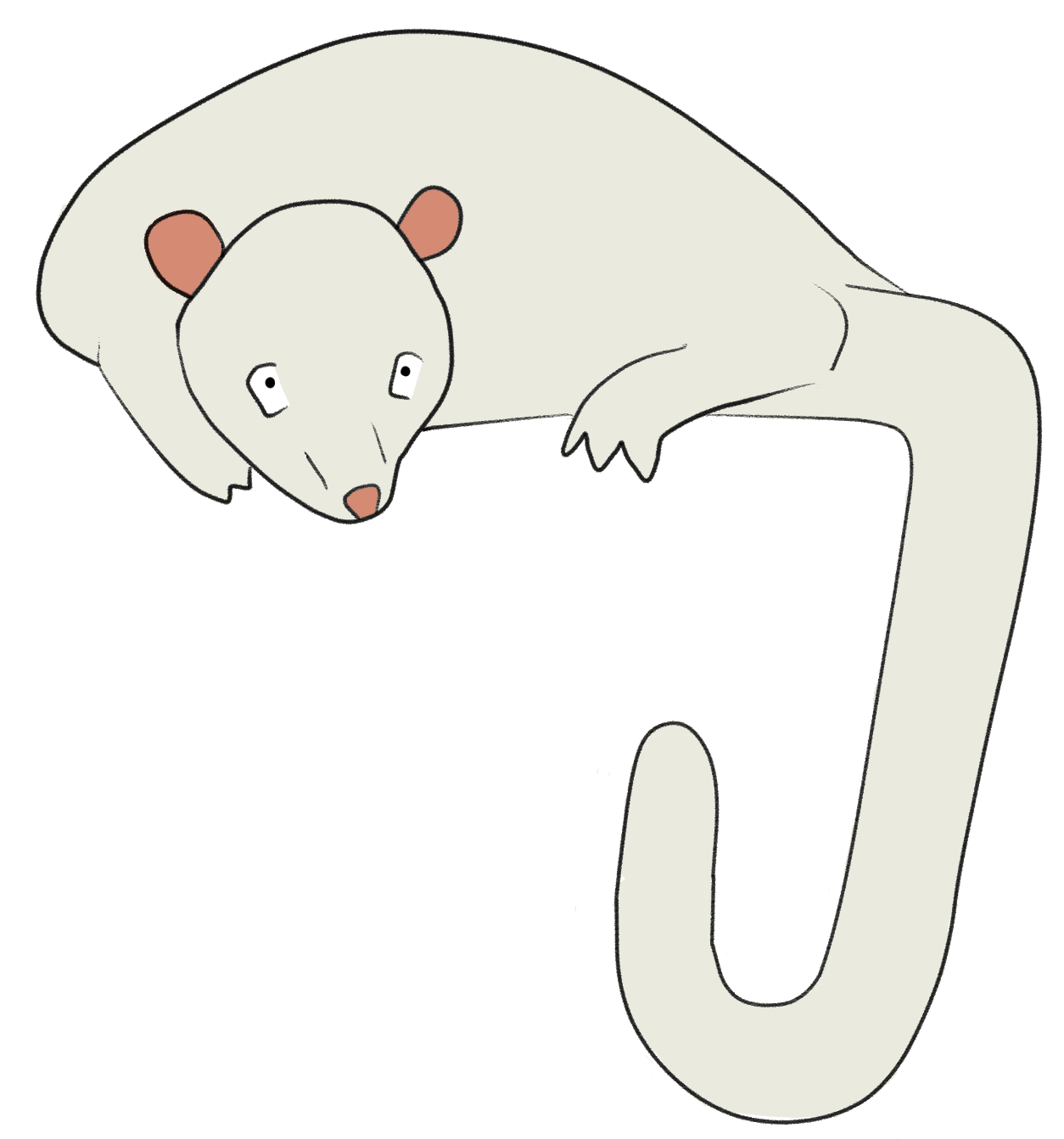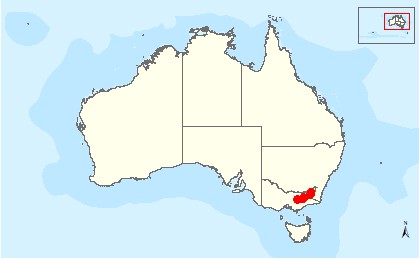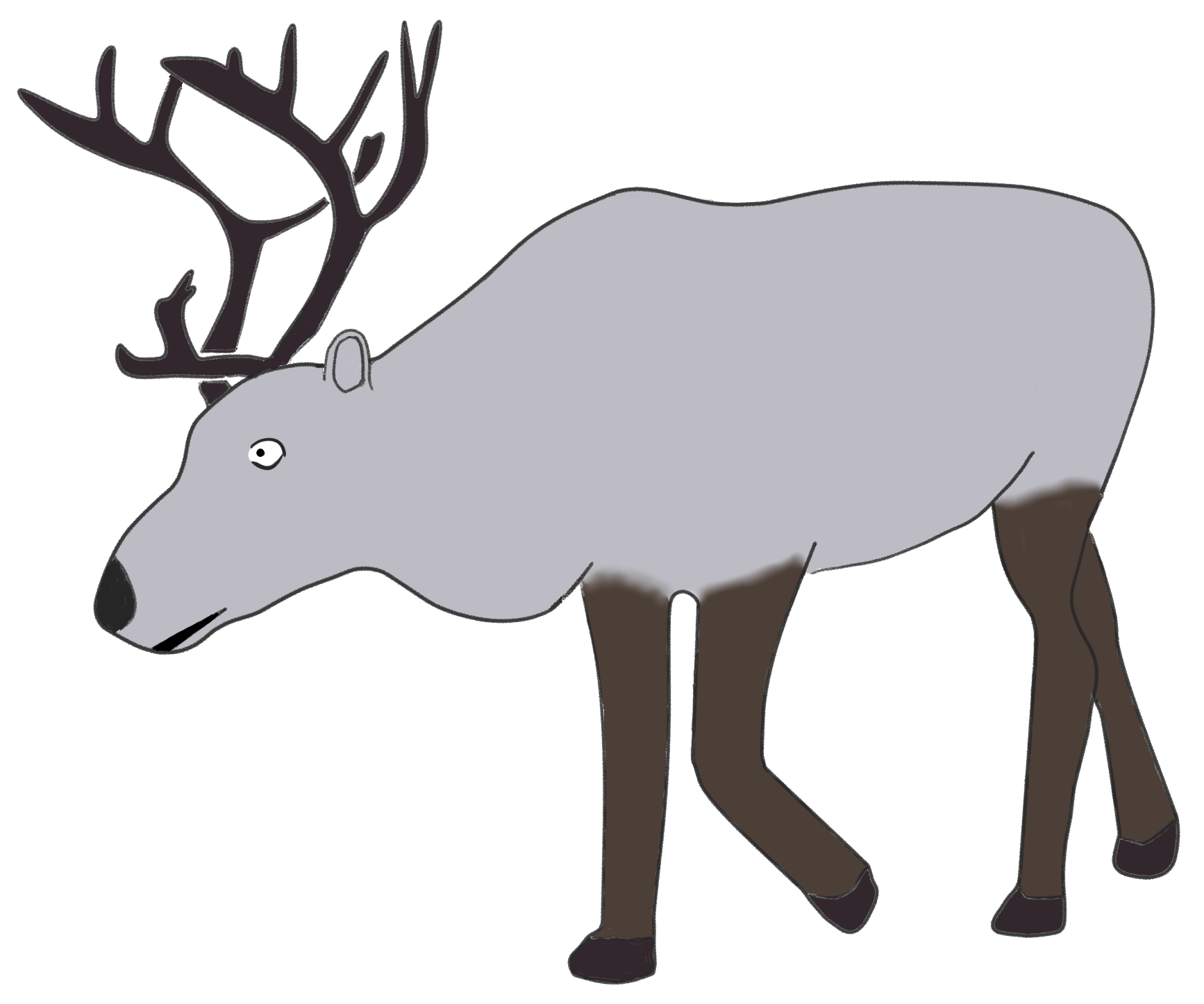IC
Polar Bear
Latin Ursus maritimus


Facts
Polar bears are the poster child for the impacts of climate change on species, and justifiably so. To date, global warming has been most pronounced in the Arctic, and this trend is projected to continue. There are suggestions that we could have a nearly ice-free Arctic summer before mid-century.
Polar bears have relatively high genetic diversity within the species, can disperse over very long distances, and are opportunistic predators, suggesting that they may have some capacity to adapt to the ongoing changes in the Arctic.
However, their dependence on sea ice makes them highly vulnerable to a changing climate. Polar bears rely heavily on the sea ice environment for traveling, hunting, mating, resting, and in some areas, maternal dens. In particular, they depend heavily on sea ice-dependent prey, such as ringed and bearded seals. Additionally, their long generation time and low reproductive rate may limit their ability to adapt to changes in the environment.
Priorities for climate-informed polar bear conservation should include identifying and protecting the “last ice areas,” the parts of the Arctic that are projected to retain sea ice farthest into the future. It is also important to increase monitoring of polar bear populations, particularly their responses to declining sea ice. As polar bears spend more time on land, we need to be prepared to manage for increased human-polar bear conflict.
In mid-November, the International Union for Conservation of Nature said that climate change was the most serious threat to polar bear survival and predicted a 30% drop in polar bear numbers in the next 35 to 40 years. Recent studies showed that the Arctic sea ice that polar bears need to hunt their prey is appearing less each year, meaning that polar bear's survival is getting more difficult.

https://www.worldwildlife.org/pages/polar-bears-and-climate-change http://www.ibtimes.co.uk/cop21-10-animals-seriously-affected-by-climate-change-1531326
APIKA
American Pika
Latin Ochotona princeps


Facts
The pika is a small mammal that is closely related to the rabbit and is found primarily on mountaintops.
Many people think the pika was the influence behind one of the world's best loved fictional animal creations, Pikachu the Pokemon. But the adorable rodent has had to move from more than a third of its previously-known habitat in the US states of Oregon and Nevada. Rising temperatures are particularly hard for the pika to adapt to, because exposure to just 25 degrees Celsius can kill them. Pika that have been slowly moving up mountains to stay in the climate they are adapted to, are discovering that mountains do not go on forever.

http://www.ibtimes.co.uk/cop21-10-animals-seriously-affected-by-climate-change-1531326
DOC
Koalas
Latin Phascolarctos cinereus


Facts
The AKF estimates that there are likely to be less than 80,000 Koalas remaining in Australia today and it could be as low as 43,000. Much of their habitat has already been lost. This makes it vitally important to save what is left.
Koalas are not bears. They are not placental or 'eutherian' mammals, but MARSUPIALS, which means that their young are born immature & they develop further in the safety of a pouch. It’s incorrect to call them ‘Koala bears' - their correct name is simply 'Koalas'.
Koalas are mostly nocturnal. Nocturnal animals are awake at night and asleep during the day. Koalas, however, sleep for part of the night and also sometimes move about in the daytime. They often sleep for up to 18-20 hours each day. There is a myth that Koalas sleep a lot because they ‘get drunk’ on gum tree leaves. Fortunately, this is not correct! Most of their time is spent sleeping because it requires a lot of energy to digest their toxic, fibrous, low-nutrition diet and sleeping is the best way to conserve energy. Koalas don’t normally need to drink as they get all the moisture they need from the gum leaves. However, they can drink if necessary, such as in times of drought when the leaves may not contain sufficient moisture. An adult Koala eats about half a kilogram to one kilogram of leaves each night, depending on many factors, including the size and sex of the koala and where the Koala lives.
A forest can only have a certain number of Koalas living in it. This is called the forest’s ‘carrying capacity'. Like pasture for sheep, the available gum trees can only feed a certain number of Koalas. There are well over 600 varieties of gum trees, or “Eucalypts”. Koalas eat only some of these. They are very fussy eaters and have strong preferences for different types of gum leaves. Within a particular area, as few as one, and generally no more than two or three species of eucalyptus trees will be regularly browsed (we call these 'primary browse trees') while a variety of other species, including some non-eucalypts, appear to be browsed occasionally or used for just sitting or sleeping in. For koalas, it's CO2 levels that put them at risk. Though higher CO2 levels can cause these trees to grow faster, that doesn't mean that there are more for koalas to eat; in fact, the eucalyptus trees are becoming less nutritious, meaning that malnutrition and starvation in koalas is increasing.
Female Koalas are fully mature by about 2 years of age and males by their third or fourth year. By this time they need to have found their own home range, either in a home range left vacant by a dead Koala or in a new area of the forest. This is one reason why Koalas need quite large areas of habitat Each Koala’s ‘home' is made up of several trees called HOME TREES. They visit these same trees regularly. The area covered by these trees is called the Koala’s HOME RANGE. Each Koala has its own home range, which overlaps those of other Koalas. Unless breeding, they don’t normally visit another Koala’s home trees. The size of each home range depends upon a range of factors including the quality of the habitat and the sex, age and social position in the population of the Koala.
Climate scientists warn that forecasts of longer dry periods, rises in temperature, more intense bushfires and severe droughts pose a significant risk to the koala, which is endemic only to Australia. "In the past decade, we have experienced the hottest temperatures on record followed by floods and cyclones. The koalas are highly susceptible to heat stress and dehydration", University of Queensland koala expert Dr. Clive McAlpine told IPS.
"Our climate envelope modelling found that koalas occur (prefer to live) at a maximum temperature of 37.7 degrees centigrade. Across western Queensland and New South Wales, temperatures remained in the mid to high 40-degree centigrade (range) for consecutive days, pushing them beyond their climatic threshold."
The name koala is derived from the aboriginal word meaning "no drink", as the creatures feed on and derive much of their moisture needs from the nutrient-poor eucalyptus leaves. An individual Koala may have to consume 500 grammes of leaves or more each day in order to grow and survive. "Climate-induced changes will not only reduce their food resource, but also the nutritional quality and moisture content of leaves. Most recently an 80 percent decline was documented in Queensland's Mulga Lands following the 10-year drought," McAlpine told IPS.
According to the AKF, protecting the existing koala eucalypt forests is also an imperative step towards reducing greenhouse emissions in Australia. Since 1788, nearly 65 percent (116 million hectares) of the koala forests have been cleared and the remaining 35 percent (41 million hectares) remains under threat from land clearing for agriculture, urban development and unsustainable forestry.

http://www.ibtimes.co.uk/cop21-10-animals-seriously-affected-by-climate-change-1531326
https://www.theguardian.com/environment/2013/apr/30/climate-change-threats-koalas
Crowther, Mathew S., et al. "Climate-Mediated Habitat Selection In An Arboreal Folivore." Ecography 37.4 (2014): 336-343. Academic Search Premier. Web. 20 Dec. 2016.
http://web.a.ebscohost.com.proxy.library.kent.edu/ehost/pdfviewer/pdfviewer?sid=7e64b236-3e26-46b9-bdc3-cb6feeb5c935%40sessionmgr4007&vid=2&hid=4101
SNOW
Snow Leopard
Latin pardus varietates nix


Facts
Snow Leopards have long been on the list of endangered species. Poaching is still a threat to the big cat, but so is climate change – as temperatures rise, mountain ecosystems change. And as snow leopards find that more and more of their usual prey is dying out or moving to different areas, they are more likely to search further afield and come into contact with humans. They are also more likely to attack livestock, provoking revenge attacks from cattle farmers. Snow leopards are particularly hard for us to help as they are such solitary animals – we are not even sure how many there are left in the wild, with estimates ranging between 4,000 and 6,500.

http://www.ibtimes.co.uk/cop21-10-animals-seriously-affected-by-climate-change-1531326
LEMY
Lemuroid Possums
Latin Hemibelideus lemuroides


Facts
There, on a single mountain range located 1,100 meters above sea level, scientists have recently found what may be the last few white lemuroid ringtail possums (Hemibelideus lemuroides), a species that was all but wiped out by a heat wave in 2005. Professor Bill Laurance of James Cook University (J.C.U.) in Queensland warns that current climate change models predict that high temperatures on the possum's mountain habitat (called Mount Carbine Tableland) will rise above that threshold, pushing the species into extinction. Professor Stephen Williams, also from J.C.U., recently predicted that the possums could disappear during the next severe heat wave, either from high temperatures or a potential forest fire. Climate change, he says, is creating unusually dry wet seasons, which could exacerbate any future fires in the rainforest.
During the day, lemuroid ringtails shelter in tree hollows. They emerge at night, leaping noisily about the rainforest canopy while feeding on leaves, flowers and fruit. Lemuroid ringtails are least active when temperatures are below 14 to 16°C.
The lemuroid ringtail is a social species, occurring in pairs or in family groups. Breeding occurs between August and November with the female giving birth to a single young. The dependant young remains with the mother until as late as the following April, after which they become independent.

https://blogs.scientificamerican.com/extinction-countdown/this-rare-white-possum-could-soon-be-a-ghostly-memory/ https://www.ehp.qld.gov.au/wildlife/animals-az/lemuroid_ringtail_possum.html
LEGS
Penguins
Latin Spheniscidae


Facts
Climate change is a growing concern for the Emperor penguin and the Adelie penguin, which live in the Antarctic. These species depend on sea ice for access to food and for places to breed. But the sea ice has been disappearing, and penguin populations along with it. A 2008 WWF study estimated that 50% of the Emperor penguins and 75% of the Adelie penguins will likely decline or disappear if global average temperatures rise above pre-industrial levels by just 2 degrees C—a scenario that could be reached in less than 40 years.

OXY
Musk Oxen
Latin Ovibos moschatus


Facts
Musk Oxen are large mammals that have been around since well before the last ice age. They are adapted to live in the coldest of habitats, it has been reported that they may be significantly endangered as global warming shrinks their distribution ranges. Longer, warmer summers could have a devastating impact on their already small population across northern Canada, Greenland, and parts of Alaska.
Musk Oxen are noted for their thick coats and for the strong odor emitted during the seasonal rut by males, by which they get their name. This musky odor is used to attract females during mating season. Its Inuktitut name "Umingmak" translates to "the bearded one.

HARLEY
Harlequin Frog
Latin Atelopus varius


Facts
According to scientists, Earth’s rising temperature enhances cloud cover on tropical mountains, leading to cooler days and warmer nights, both of which favor proliferation of the Chytrid Fungus, and could mean the extinction of harlequin frogs.
Amphibian skin is extremely thin, which makes frogs acutely sensitive to even minor changes in temperature, humidity, and air or water quality. It also makes frogs more susceptible to chytrid fungus. The new study suggests that temperature extremes may have previously helped keep the deadly disease in check. But new climate cycles are now moderating those annual temperature swings.
Global warming has increased evaporation in the tropical mountains of the Americas, which in turn has promoted cloud formation, the study reports. That cloud cover may have actually decreased daytime temperatures by blocking sunlight. At the same time, it may have served as an insulating blanket to raise nighttime highs.
The bright pattern of their skin is often yellow, but may also be another color like green, orange, or red. The frog gets its common name from these colors. A harlequin is a court jester, a person who hundreds of years ago wore gaudy, colorful costumes to entertain an audience.

https://commons.wikimedia.org/w/index.php?search=golden+toad&title=Special:Search&go=Go&uselang=en&searchToken=58x91zpywl15i5kmayyx4rckt#/media/File:Bufo_periglenes2_cropped.jpg
http://www.global-greenhouse-warming.com/extinction-of-harlequin-frogs.html
http://news.nationalgeographic.com/news/2006/01/0112_060112_frog_climate.html
http://animals.jrank.org/pages/141/True-Toads-Harlequin-Frogs-Relatives-Bufonidae-HARLEQUIN-FROG-Atelopus-varius-SPECIES-ACCOUNTS.html
ROCKET
Sea Turtle
Latin mare turtures


Facts
Human activities have tipped the scales against the survival of these ancient mariners. Nearly all species of sea turtle are classified as endangered. Slaughtered for their eggs, meat, skin and shells, sea turtles suffer from poaching and overexploitation. They also face habitat destruction and accidental capture in fishing gear. Climate change has an impact on turtle nesting sites. It alters sand temperatures, which then affects the sex of hatchlings.
Because sea turtles use both marine and terrestrial habitats during their life cycles, the effects of climate change are likely to have a devastating impact on these endangered species. A rise in the sea level will impact sea turtle nesting beaches. Sea turtles’ memories are “imprinted” with a magnetic map of the sandy beach where they hatch. This gives them the unique ability to return to that same site decades later to repeat their ancient nesting ritual. With melting polar ice caps and rising sea levels, these beaches are beginning to disappear. The direct impacts of sea level rise include losing beaches, ecologically productive wetlands and barrier islands.
An increase in nesting beach temperatures will also have an impact on sea turtles. Because sea turtles are reptiles, they rely on the temperature of the sand in which the eggs incubate to determine the gender of the hatchling in a nest. Typically, the eggs in the lower, cooler, part of the nest will become males, while the eggs in the upper, warmer, part of the nest will become females. With increasing nest temperatures, scientists predict that there will be more female than male hatchlings, creating a significant threat to genetic diversity. Warmer ocean temperatures are also likely to negatively impact food resources for sea turtles, and virtually all marine species. Coral reefs, which are an important food source for sea turtles, are in great danger. Almost half of the coral reef ecosystems in the U.S. are in poor or fair condition. As a result of rising temperatures, coral reefs are suffering from a “bleaching” effect that kills off parts of the reef.
Sea grass beds are important because they provide breeding and developmental grounds for many species of fish, shellfish and crustaceans. Without sea grass beds, many marine species humans harvest would be lost, as would the lower levels of the food chain. The reactions could result in many more marine species being lost and eventually impacting humans. So if sea turtles go extinct, there would be a serious decline in sea grass beds and a decline in all the other species dependent upon the grass beds for survival.
Dune vegetation is able to grow and become stronger with the presence of nutrients from turtle eggs. As the dune vegetation grows stronger and healthier, the health of the entire beach/dune ecosystem becomes better. Stronger vegetation and root systems helps to hold the sand in the dunes and helps protect the beach from erosion.
The oldest known sea turtle fossils date back about 150 million years, making them some of the oldest creatures on Earth. Just for some context, dinosaurs became extinct 65 million years ago.
It is estimated that only one hatchling in a thousand will make it to adulthood. Whether it’s the treacherous journey from nest to ocean or the predatory dangers of the open sea.
Females lay up to 150 eggs every two to three years.

http://www.worldwildlife.org/species/sea-turtle
https://conserveturtles.org/information-sea-turtles-threats-climate-change/
https://conserveturtles.org/information-sea-turtles-threats-climate-change/
http://www.huffingtonpost.com/2014/06/18/sea-turtle-facts_n_5505508.html
RUDY
Reindeer
Latin Rangifer tarandus


Facts
Not only are reindeer finding that the cold, snowy habitat they prefer is retreating further with each passing year, they are also having trouble getting at their food. Reindeer subsist on a diet of lichen and moss, but with current erratic rainfall in Arctic areas, these nutrients are hidden under a layer of ice that the reindeer cannot pierce. Added to that, rivers that used to freeze so solid they were used as paths by reindeer and herders such as the Sami in northern Scandinavia are not becoming so solid any more. A few years ago, 300 reindeer were lost in northern Sweden after the ice on a river they were crossing broke.
While overall widespread and numerous,[2] some of its subspecies are rare and at least one has already become extinct.[4][5] For this reason, it is considered to be vulnerable by the IUCN. Reindeer vary considerably in color and size. Both sexes can grow antlers annually, although the proportion of females that grow antlers varies greatly between population and season.[6] Antlers are typically larger on males.
Hunting of wild reindeer and herding of semi-domesticated reindeer (for meat, hides, antlers, milk and transportation) are important to several Arctic and Subarctic peoples.

http://www.ibtimes.co.uk/cop21-10-animals-seriously-affected-by-climate-change-1531326
https://en.wikipedia.org/wiki/Reindeer










